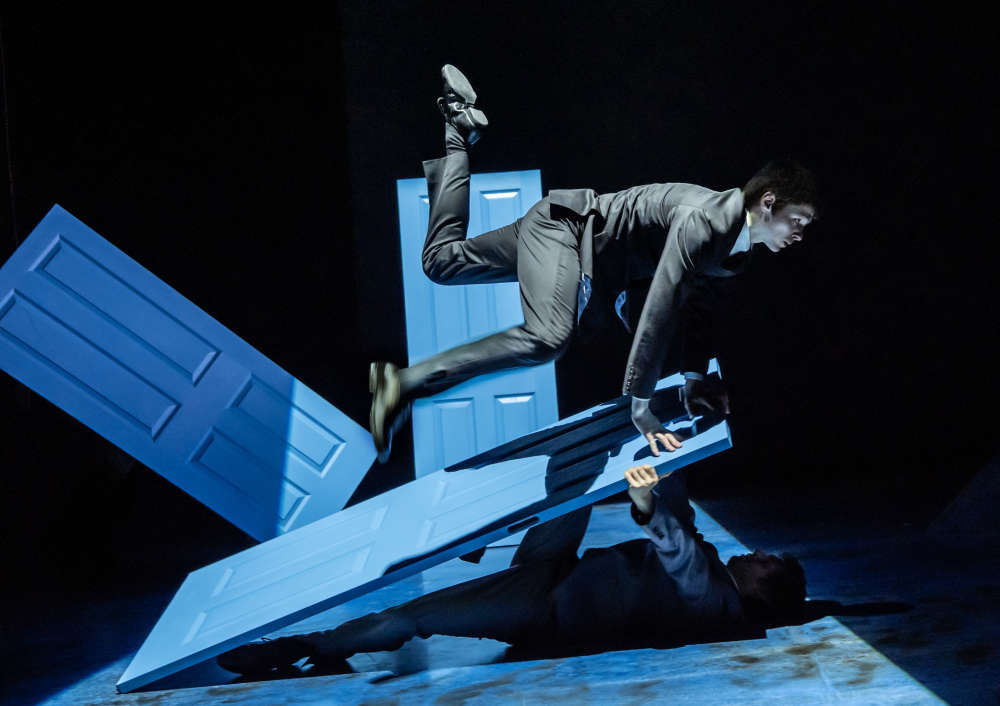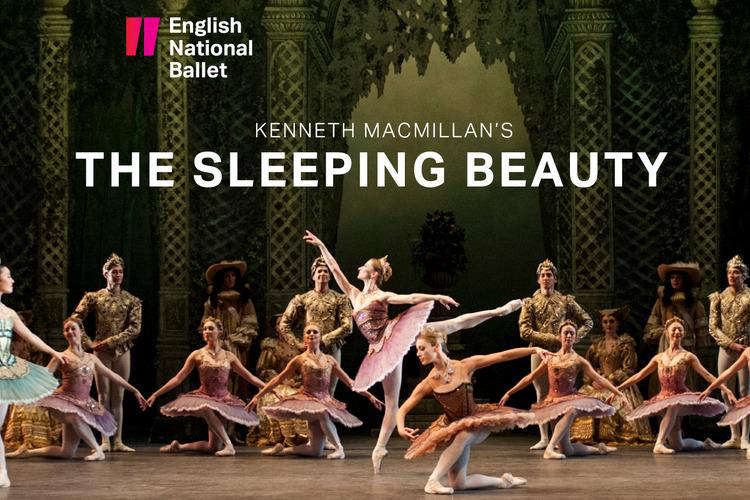
Dylan Jones is a dancer in the new ballet adaptation of Pete Townsend's 'Quadrophenia.'
This is an interview about Quadrophenia: All Mod Contemporary Dance - featuring dancer Dylan Jones and Xan Phillips
Dylan Jones is a dancer in the new ballet adaptation of Pete Townsend's 'Quadrophenia.'
Dylan explains the complex subcultures of the 1960s, focusing on the clashes between mods and rockers, and describes his role as one of the four facets of the lead character Jimmy: the lunatic.
He discusses the differences between traditional ballet and contemporary dance, emphasizing the latter's improvisational elements and more flexible movements.
Dylan also highlights the innovative stage projections and the experience of dancing in Paul Smith tailored suits.
The interview provides a comprehensive look at the show's unique integration of contemporary dance, rock music, and modern stage techniques.
Transcript
[00:00:00] Xan Phillips: You're listening to Southampton's Voice FM. My name is Xan, and this is Arts and Culture. And in the sixties, music was your tribe. You had the sounds, your heroes, your way of dressing, and you were prepared to fight those who had opposite tastes, values and behaviors. In particular, the mods and the rockers would light up bank holiday weekends in seaside resorts with violent clashes.
And all of this subculture was captured in Pete Townsend's classic film. Quadrophenia, it's now been reworked into a ballet by Saddlers Wells. And here to tell us more is Dylan Jones, who plays one of the facets of Jimmy, the lead character.
Dylan. Hello, how are you?
[00:00:40] Dylan Jones: Hello. I'm good, thank you. How are you?
[00:00:41] Xan Phillips: I'm very well, thanks. And for those who dunno anything about Jimmy and his facets, please explain that to us.
[00:00:49] Dylan Jones: So, so Jimmy is essentially, he's like an 18-year-old guy and he's just going through life and he's having a bit of an identity crisis.
He doesn't know who he wants to be, and the four facets essentially represent the four different parts of him, which he is struggling with. So there's the romantic, there's the tough guy, the hypocrite, and then there's the lunatic,
[00:01:14] Xan Phillips: and which one are you?
[00:01:15] Dylan Jones: I'm the lunatic, the crazy one.
[00:01:18] Xan Phillips: Was that an easy role to, uh, sink into?
[00:01:22] Dylan Jones: Honestly, uh, a lot of the work I've done, I've always been some sort of a crazy person, so I can tap into that fairly easily.
[00:01:31] Xan Phillips: But this is, um, I mean, I'm, I'm, I'm, here's my naivety as far as ballet goes. I mean, you don't, you don't seem to have many crazy people in ballet. Is this, is this something of an exception or am I just not, I haven't seen enough ballet.
[00:01:46] Dylan Jones: I, I think this show in particular, um, it's kind of been branded as this, uh, this ballet, but I would say the premise of the, the movement especially comes more from a contemporary dance point of view. And, um, there's definitely. Balletic elements within the whole piece. But, um, it, it, it's drawing from a lot of different places and even in the cast, the cast all come from very different backgrounds.
Some ballet, some contemporary, some more musical theater. Um, so even though it is a ballet, it's a very big mix. And I feel like that's, um, one of the reasons that the story can be portrayed in the way it is.
[00:02:23] Xan Phillips: I see. So therefore, just as much as you've got mods and rockers, uh, you've got contemporary and ballet.
[00:02:28] Dylan Jones: Yeah, yeah, yeah. You could say that.
[00:02:30] Xan Phillips: Opposite gangs almost.
[00:02:32] Dylan Jones: Yes.
[00:02:33] Xan Phillips: So just for those of us, um, who are unaware the difference between ballet and contemporary, can you give us, um, a rough idea of, uh, how you could spot the difference?
[00:02:43] Dylan Jones: Um, so ballet is very, very traditional. It's very structured. Um, all the movement comes from somewhere and goes through positions.
You could say. Um. Contemporary dance is a lot more free. Um, it, it can be, it can be anything really. It can be absolutely chaotic. It can be absolutely tiny and minuscule. Um, and the, the biggest thing you could tend to look out for between, the difference between the two I'd say, is, um, the, the, probably the energy that you give out when you are performing ballet is very often it up.
It's out. Um, and actually in contemporary dance. It can be that as well, but it can very much be like inwards as well. Um, so that's probably one of the biggest things I'd say.
[00:03:31] Xan Phillips: And are you allowed to, to improvise in your dance or are, are you just like ballet, you have a set structure to what you have to do?
[00:03:39] Dylan Jones: A huge part of contemporary dance is improvisation. Um, there's none in, in the show, um, but I've done many shows where I am improvising on stage. Um, we do warmup classes and in our warmup classes we use improvisation, uh, to warm ourselves up, um, as well as some days we'll have a ballet class. Some days we'll do other different classes.
[00:04:01] Xan Phillips: So we, I mean, most people probably have seen a little bit of improvised comedy. So when you, when you get to improvised dance, which part of your body leads, so to speak? Is it, is it the brain or is it the foot or the hand? I mean, how, how do you get it outta you?
[00:04:20] Dylan Jones: Actually, that's a great question. Um, often it, it can change, um.
Sometimes thinking about it can be the wrong thing. Um, and actually you just need to let, let something happen and then go with that and follow through with it. But then sometimes you want to think about it and you want to know what your body's doing. Um, but there, there's like a sense of awareness in which one you are doing, um, and an openness to, to whatever it leads to and just going with it.
[00:04:52] Xan Phillips: Okay. So when it comes to, um, this particular. Um, piece, you've obviously got music in there, you've got, I'm expecting some modern music and some rock. Um, is, was this music new to you as as, or did you grow up with your parents listening to this kind of sound?
[00:05:12] Dylan Jones: Um, well actually I, before this, The Who weren't very big in my life, um, like my parents weren't necessarily fans or anything, so it was all relatively new to me.
Um. But, uh, I, I'm a, a musician as well as dance, so I have a lot of experience in working in different genres of music. Um, so the genre of rock, it wasn't that new to me. Um, so yeah. Yeah. But this version is, it's very orchestral. There's moments within it where we have, um, almost like snippets of what it was, but it's, it's this new kind of developed orchestral version where it's like.
Keeping the ideas and the, the i, essentially the ideas of what they want to show, but through a medium where it supports what we're showing on stage.
[00:06:04] Xan Phillips: Mm. So you've got, Jimmy's got these four facets then, and, and you are the lunatic. Um, so, uh, are, do you get like a, a solo with like, like Jimmy standing there and, and so you have a solo around him or are you represented as Jimmy on stage?
Um, how, how they've worked it out.

Dylan Jones: So each facet has, um, a duet with Jimmy. Um, so the lunatics is very quick actually. It's, uh. We do the whole opening scene. We have a transition scene with the open doors, and then we go into the psychiatrist office, um, where he, he realizes he has a problem and he is going and he is trying to, to like, figure out what's wrong with him.
And I'm behind him, um, going crazy, trying to, trying to take over him and like not let him break down that wall. Um. So I, I have that scene relatively quickly on, um, in the show. And then later on there's the, um, romantic scene where Jimmy's fantasizing about the girl he's in love with, but she's with someone else.
And the romantic is trying to like, persuade him to like, go after it or whatever that is to him. Um, then at the start of act two, the, the tough guy comes out, has his scene, and that's, um. It's almost a bit of a fight with his dad. He, he has a really bad relationship with his parents and, um, the tough guy comes out of him and essentially starts a fight on it with his own dad.
And then the hypocrite scene at the end, um. Jimmy idolizes the ace face, and, uh, he finds out that the ace face just has a regular job and he's just a Bell Boy, and he's disheartened and he like, he, he hates him for it. Um, and it's this whole scene of like, actually the ace face has this identity problem as well, and the hypocrite comes out to say, well, you can't have these problems.
Like, what? What the hell? And yeah. So we each have these individual moments where we all get to come out and. Do our thing with it. Yeah.
[00:08:40] Xan Phillips: And so, so as a piece compared to other pieces that you've done before, is this, is this quite different? Does this, is this a, uh, something which is setting a, a new direction for dance?
Um, or is it fairly, so the, the things that you are talking about, are they fairly, uh, traditional something that's you've seen before?
[00:08:58] Dylan Jones: Um, I wouldn't say that it's traditional. Um, I, I wouldn't necessarily say it's groundbreaking. Um, I. I think the big thing for this show is that there, there's so much coming together in terms of um, like lighting, projection, music, dance, and it feels like there's so much all being put together, which for me, that feels quite new.
Um. And very cool, I must say, like, to get to work with, um, these amazing projections, um, and like dance within them. Like it's, it's pretty, pretty amazing.
[00:09:37] Xan Phillips: Ah, no, I don't know anything about these amazing projections. So you're saying there's some sort of stage, uh, stage techniques going on then.
Yes. Special effects. Yes.
[00:09:47] Dylan Jones: Yes, definitely. We have, we have loads of projections and screens that fly in, stuff that gets projected onto them, onto the back, across the stage. Like it's really cool. Really cool.
[00:09:58] Xan Phillips: Excellent. So, um, if you were transported back in time, um, would you be a mod or a rocker?
[00:10:07] Dylan Jones: Oh. I think I would probably be a mod. I, I think I prefer the look, the, the, the sharp suits. I'm not much of a leather jacket kind of guy, so I'd probably go for mod.
[00:10:22] Xan Phillips: Well, the, um, because the outfit, the, the, not the outfit, the, the, the costume, what you're wearing, I think it's, um, if you are, if you are a mod, then you are Paul Smith, aren't you?
You're wearing some, um, pretty chic stuff at the moment.
[00:10:33] Dylan Jones: Yeah. Yeah. So the, the facet suits, um, Jimmy's suit, ace face, all wear, um, a Paul Smith tailored suit. Yeah.
[00:10:41] Xan Phillips: Wow. And, um, good to dance in.
[00:10:44] Dylan Jones: Surprisingly, yes, actually I, I like managed to rip the hell out on my trousers, um, during tech week, but since then, no problems at all.
[00:10:54] Xan Phillips: Does that, is that a usual problem or is that the first time it's sort of happened? I.
[00:10:59] Dylan Jones: Oh no. A tech week, I always try and rip my clothes so that they, they get a fixed and that they're okay for when we perform.
[00:11:05] Xan Phillips: Right. Okay. That's, yes, I, I can imagine, yes, it is, it is a good idea to stay, uh, uh, perfectly dressed when you're doing this.
Well, Dylan, you've, um, you've made it sound very entertaining and, uh, very exciting. And it comes to, uh, the Mayflower Theater on the 18th of June. So that is, uh, Tuesday through to, uh, Saturday. And, uh, we wish you the best of luck. Break a leg and, uh, and look forward to, uh, seeing you on stage.
[00:11:32] Dylan Jones: Uh, thank you so much.


 Review: Sleeping Beauty at Mayflower Theatre
Review: Sleeping Beauty at Mayflower Theatre
 White Ribbon Day Marked By Southampton City Council
White Ribbon Day Marked By Southampton City Council
 Sustainable AI From Southampton Student
Sustainable AI From Southampton Student
 Knife Crime Campaign Starts In Southampton
Knife Crime Campaign Starts In Southampton
 Council Invites Public Support for New Northam Bridge
Council Invites Public Support for New Northam Bridge
 What Jamie’s Computers Does
What Jamie’s Computers Does




Comments
Add a comment